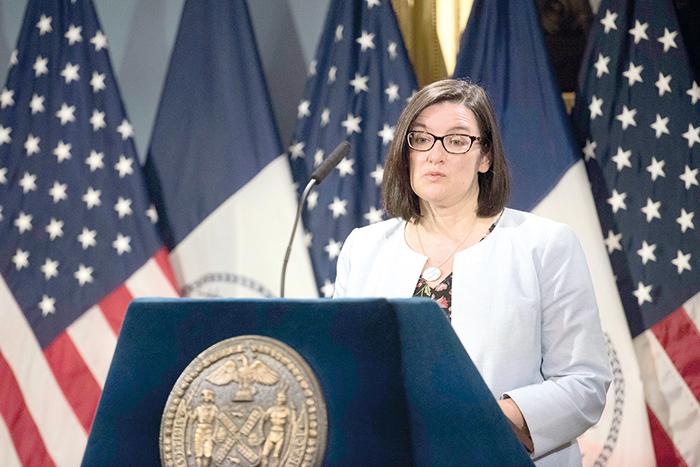Photo Courtesy of Michael Appleton/Mayoral Photography Office
DOI Commissioner Margaret Garnett
By Forum Staff
City Department of Investigation Commissioner Margaret Garnett issued a report Friday detailing the investigation into the response of the NYPD to the George Floyd protests held throughout the City from May 28, 2020, through June 20, 2020. The mayor directed DOI to conduct a review of the NYPD’s response, a directive that was later codified in Executive Order 58 and signed on June 20, 2020. In addition, on May 31, 2020, DOI received a request from City Council Speaker Corey Johnson and Councilmember Ritchie Torres, Chair of the Oversight & Investigations Committee, to investigate the NYPD’s approach to policing the protests. DOI’s investigation focused on the NYPD’s institutional and operational response to the protests, including but not limited to its planning, strategy, enforcement actions, intelligence collection and dissemination, training, and police-community relations. As part of the investigation, DOI also examined the history and current structures of civilian police oversight in New York City. The report made 20 recommendations to the NYPD to improve their response to mass protests and two recommendations regarding streamlining and improving police oversight in the city. DOI Commissioner Margaret Garnett said, “This investigation sets out DOI’s findings on the important issues of how the NYPD responds to mass protests, and the structure of civilian police oversight in this City. Our hope is that these factual findings, analysis, and recommendations will contribute to meaningful changes at the NYPD, as well as provide a map toward greater police transparency through a comprehensive and coordinated police oversight approach. I urge the NYPD and elected officials to implement the recommendations outlined in this Report and embrace the opportunity for reform.” DOI’s investigation identified several deficiencies in the NYPD’s response to the protests that undermined public confidence in the NYPD’s discharge of its responsibility to protect the rights of the public to engage in lawful protest. Specifically:
- The NYPD lacked a clearly defined strategy tailored to respond to the large-scale protests of police and policing. The NYPD largely defaulted to application of “disorder control” tactics and methods, without adjustment to reflect their responsibility to facilitate lawful First Amendment expression.
- The NYPD’s use of force and certain crowd control tactics to respond to the Floyd protests resulted in excessive enforcement that contributed to heightened tensions.
Some policing decisions relied on intelligence without sufficient consideration of context or proportionality. The NYPD collected specific intelligence that warranted consideration in making policing judgments; however, intelligence alone does not dictate a particular police response, which was, at times, disproportionate.
- The NYPD deployed officers who lacked sufficient, or sufficiently recent, training on policing protests. With the exception of officers in specialized units, most officers responding to the protests had not received recent relevant training for policing protests.
- The NYPD lacked a centralized community affairs strategy for the Floyd protests. The NYPD Community Affairs Bureau was not part of the planning or strategy for policing the Floyd protests.
- The NYPD lacked a sufficient data collection system to track relevant protest data. DOI determined that the NYPD lacks a reliable, consistent method to capture relevant protest data including the total number of protest-related arrests.

